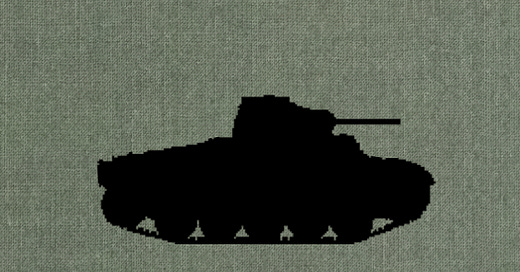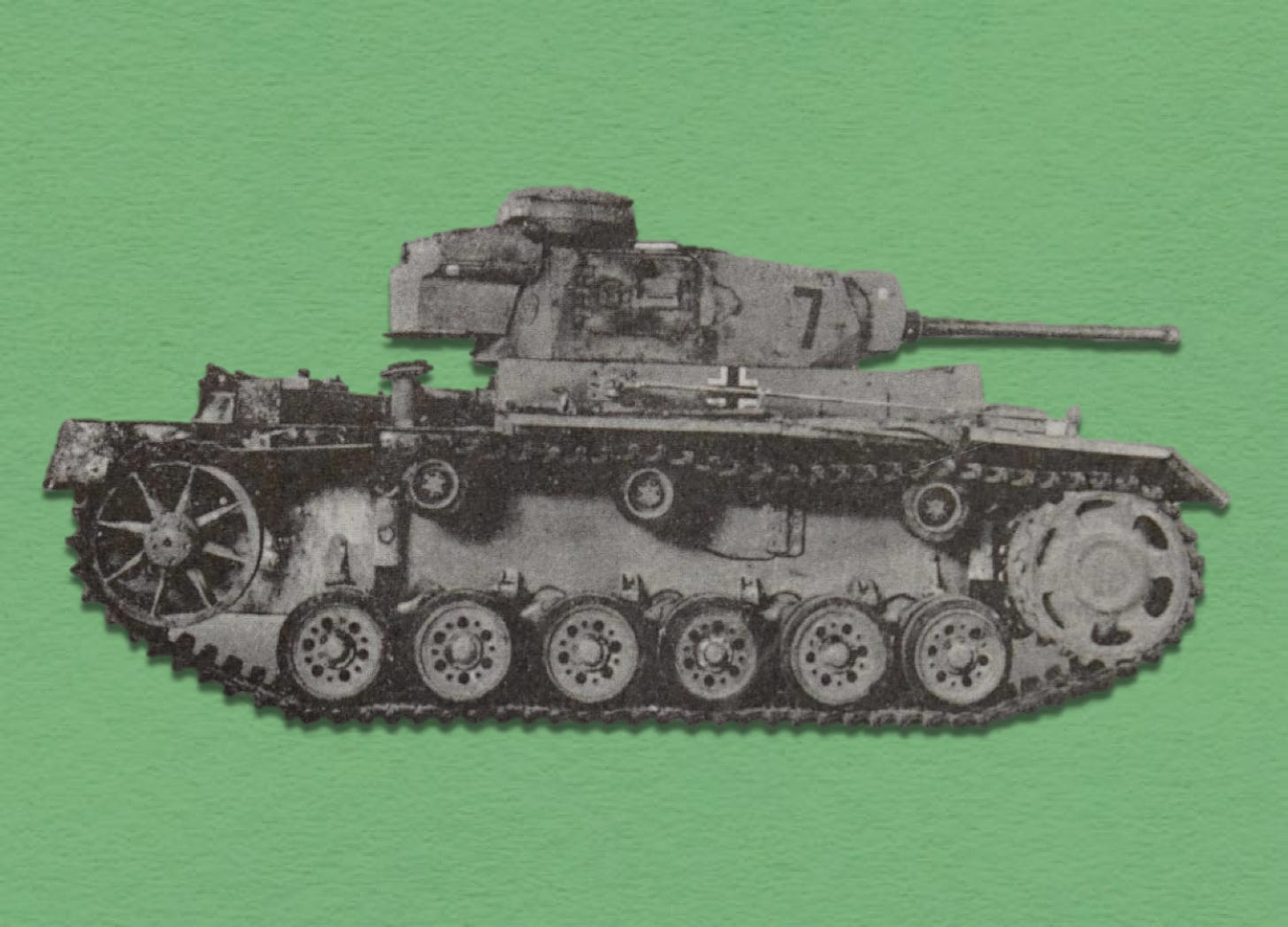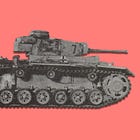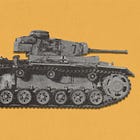Published under the deceptively simple title of “Tanks,” the first feature article in the first issue of the Armored Forces Newsletter [Nachrichtenblatt der Panzertruppen] discusses three topics: the functional characteristics of armored formations, the employment of tanks, and the Tiger tank. This post provides a translation of the third segment of the piece.
III. Principles for the Use of the Tiger Tank
In many past actions, the Tiger tank has proved itself. Unfortunately, there have been cases where ignorance of its peculiarities led to erroneous expectations that, in turn, prevented the achievement of complete success. Successful employment of the Tiger tank depends upon careful preparations, and, in particular, a thorough appreciation of the terrain [through which the tank will maneuver.]
We can only expect decisive success from this new and powerful fighting tool when, in accordance with the basic ideas of the use of tanks, it is sent into action [eingesetzt] as part of an undivided unit and against a point of decisive importance [entscheidener Stelle].
We should not let the superior fighting power [Kampfkraft] of the Tiger tank and its great resistance to the effects of enemy weapons lead us to waste it in a thoughtless manner. Thus, the Tiger should be employed in a concentrated manner for appropriate purposes in promising situations, and neither as a reconnaissance-, lead-, or overwatch vehicle nor as an assault gun or tank hunter.
A Tiger battalion is most effective when employed in concert with other tank units. In the future, this will be the only mission assigned to it. At the focus of of the tank attack [Schwerpunkt des Panzerangriffes], the Tiger unit forms the sharp spearhead of the tank wedge [Stoßspitze des Panzerkeils]. It breaks the resistance of enemy defensive weapons, seeks battle with the heavy tanks of the enemy, and, by annihilating the latter, sets the stage for the success of our light tank units. When the Tiger unit serves as the path breaker for light tank units, it leaves to the latter such secondary missions as reconnaissance and security, thereby preserving all of its fighting power [Kampfkraft].
After-action reports indicate that the employment of Mark III and Mark IV tanks as “escort tanks” [Begleitpanzer] for Tigers did not work out well. Employed to provide close protection, these [lighter] tanks were, thanks to their weaker armor, quickly shot to pieces. In the future, Tiger battalions will be provided with an armored reconnaissance platoon and an armored engineer platoon.
Note: The lead illustration, which depicts a Mark II tank (and not a Tiger), serves to remind readers that this post continues the translation of the first feature-length article in the Armored Troops Newsletter.
Source: A typescript of the first issue of the Nachrichtenblatt der Panzertruppen can be found on the website of the German Federal Archive. Printed copies of subsequent issues are available at Sturmpanzer.com.
For Further Reading:








God, grant me the serenity to recognise that "here's our wunderwaffe but it's incredibly fragile and we don't have many of them" means we're going to lose the war;
The courage to get myself transferred to another front and start planning my surrender;
And the wisdom to not have previously let myself be too directly implicated in any major war crimes.
Interesting that this article views the only purpose of a Tiger Battalion is to fight other tanks and neglects to include panzer grenadiers, artillery, close air support, anti-tank, anti-aircraft, etc. as part of a combined arms attack. Or does this refers only to counter attacks against Soviet offensives?